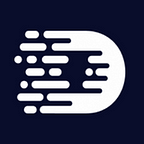How does DeTech use Crowdsourcing in Technology Assessment?
We are developing a modular DeTech platform grounded on four pillars: IP management, Discovery, Assessment and Marketplace. All modules can be selected on-demand, thereby activating the underlying features within a module. One of the basic functions within the Assessment module is Crowdsourcing of expertise. What is Crowdsourcing and why does DeTech implement this feature?
What Is Crowdsourcing: The Fundamentals
Let’s start with defining what crowdsourcing is. This will help us make a clear distinction between crowdsourcing and other knowledge-management tools — such as brainstorming, with which crowdsourcing is regularly confused.
The term “crowdsourcing” was first coined by journalist Jeff Howe in 2006. Howe also provided the original — and, arguably, still the most precise and comprehensive — definition of crowdsourcing, describing it as “the act of taking a job traditionally performed by a designated agent (usually an employee) and outsourcing it to an undefined, generally large group of people in the form of an open call”.
What is very important in this definition is that crowdsourcing is not just about a crowd; first and foremost, it’s about outsourcing a job, a point that is often forgotten in our conversations about crowdsourcing. Simply speaking, crowdsourcing is outsourcing a job to a crowd of external contributors. Or, to rewrite this statement as a simple formula:
Crowdsourcing = a job + a crowd.
Crowdsourcing: Two Approaches, Two Objectives
Now that we’ve answered the question “what is crowdsourcing”, we now need to address how the methodology can be used to solve business challenges. There are a huge variety of different “jobs” organizations can potentially outsource to a crowd of external contributors. However, it’s possible to reduce all crowdsourcing tasks down to fit within two major approaches: adding capacity and accessing expertise.
Both types have characteristic features and follow their own rules of engagement. Understanding the difference between the two is very important because the lack of such understanding frequently results in the failure of crowdsourcing campaigns. It would, therefore, be useful to discuss these two types of crowdsourcing separately.
Adding the Capacity for Capturing Genius
Crowdsourcing by adding capacity is the process of splitting a large job into small, usually identical, parts. A crowd is then assigned to take care of these broken-down tasks, with the whole job being completed quicker as a result.
The members of the “adding capacity” crowd usually don’t need any special training to perform the job. However, it’s the responsibility of the project sponsor to provide the crowd with clear directions on how each part of the job should be completed. It’s also the sponsor’s responsibility to design a robust protocol for assembling the whole job from its crowdsourced sub-components.
In most cases, the larger the crowd that is available for adding capacity crowdsourcing, the better.
Accessing Expertise to Power Innovation
The “accessing expertise” approach to crowdsourcing is essentially the process of exploring the proverbial “wisdom of crowds.” It’s the methodology of collecting expertise, creativity, and skills from anywhere outside the organization. There seems to be no established academic term for “accessing expertise” crowdsourcing, although “crowdsourced innovation” comes very close.
In contrast to “adding capacity”, members of the “accessing expertise” crowd should have the relevant experiences or insights to allow them to solve the problem — and the more sophisticated the problem, the more experienced the members of the crowd are expected to be. Moreover, these days, many complex technical and business problems require completely novel, unexpected, and sometimes unorthodox solutions — meaning that the pool of incoming contributions should include many different ways of solving the problem, out of which only one or a few may turn out to be viable.
The “accessing expertise” crowdsourcing approach works best when it targets crowds that are diverse. This is because the more diverse the crowd, the more varied and creative the insights and ideas gleaned from it. On the other hand, the crowd size by itself is, perhaps, a secondary consideration for “accessing expertise”. Sure, larger crowds are usually more diverse, but a relatively small yet very diverse crowd can be remarkably successful when tackling the most challenging problems.
How does DeTech use crowdsourcing?
So, DeTech presents crowdsourcing in the form of “accessing expertise”. It happens this way: an expert can leave his assessment of the technology that is uploaded to the platform in the form of an independent review. Thus, experts increase their ECI (Expert Contribution Index).
